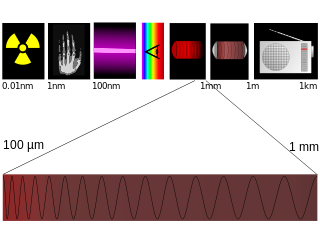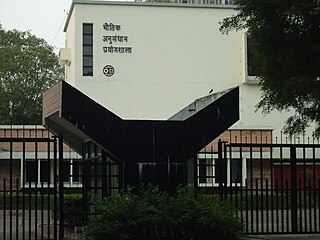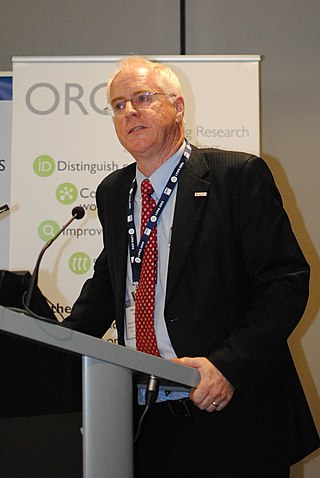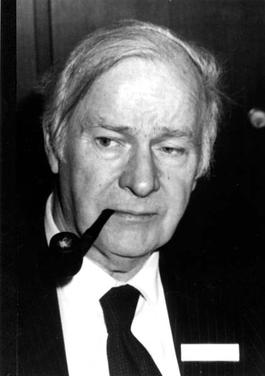
The SANS Institute is a private U.S. for-profit company founded in 1989 that specializes in information security, cybersecurity training, and selling certificates. Topics available for training include cyber and network defenses, penetration testing, incident response, digital forensics, and auditing. The information security courses are developed through a consensus process involving administrators, security managers, and information security professionals. The courses cover security fundamentals and technical aspects of information security. The institute has been recognized for its training programs and certification programs. Per 2021, SANS is the world’s largest cybersecurity research and training organization. SANS is an acronym for SysAdmin, Audit, Network, and Security.
Quantum key distribution (QKD) is a secure communication method that implements a cryptographic protocol involving components of quantum mechanics. It enables two parties to produce a shared random secret key known only to them, which then can be used to encrypt and decrypt messages. The process of quantum key distribution is not to be confused with quantum cryptography, as it is the best-known example of a quantum-cryptographic task.

The Niels Bohr Institute is a research institute of the University of Copenhagen. The research of the institute spans astronomy, geophysics, nanotechnology, particle physics, quantum mechanics, and biophysics.

The Internet Storm Center (ISC) is a program of the SANS Technology Institute, a branch of the SANS Institute which monitors the level of malicious activity on the Internet, particularly with regard to large-scale infrastructure events.

The history of the telescope can be traced to before the invention of the earliest known telescope, which appeared in 1608 in the Netherlands, when a patent was submitted by Hans Lippershey, an eyeglass maker. Although Lippershey did not receive his patent, news of the invention soon spread across Europe. The design of these early refracting telescopes consisted of a convex objective lens and a concave eyepiece. Galileo improved on this design the following year and applied it to astronomy. In 1611, Johannes Kepler described how a far more useful telescope could be made with a convex objective lens and a convex eyepiece lens. By 1655, astronomers such as Christiaan Huygens were building powerful but unwieldy Keplerian telescopes with compound eyepieces.

Terahertz radiation – also known as submillimeter radiation, terahertz waves, tremendously high frequency (THF), T-rays, T-waves, T-light, T-lux or THz – consists of electromagnetic waves within the ITU-designated band of frequencies from 0.3 to 3 terahertz (THz), although the upper boundary is somewhat arbitrary and is considered by some sources as 30 THz. One terahertz is 1012 Hz or 1,000 GHz. Wavelengths of radiation in the terahertz band correspondingly range from 1 mm to 0.1 mm = 100 µm. Because terahertz radiation begins at a wavelength of around 1 millimeter and proceeds into shorter wavelengths, it is sometimes known as the submillimeter band, and its radiation as submillimeter waves, especially in astronomy. This band of electromagnetic radiation lies within the transition region between microwave and far infrared, and can be regarded as either.

Chris Wysopal is an entrepreneur, computer security expert and co-founder and CTO of Veracode. He was a member of the high-profile hacker think tank the L0pht where he was a vulnerability researcher.
DShield is a community-based collaborative firewall log correlation system. It receives logs from volunteers worldwide and uses them to analyze attack trends. It is used as the data collection engine behind the SANS Internet Storm Center (ISC). DShield was officially launched end of November 2000 by Johannes Ullrich. Since then, it has grown to be a dominating attack correlation engine with worldwide coverage.

The Physical Research Laboratory is a National Research Institute for space and allied sciences, supported mainly by Department of Space, Government of India. This research laboratory has ongoing research programmes in astronomy and astrophysics, atmospheric sciences and aeronomy, planetary and geosciences, Earth sciences, Solar System studies and theoretical physics. It also manages the Udaipur Solar Observatory and Mount Abu InfraRed Observatory. The PRL is located in Ahmedabad.

The Gottfried Wilhelm Leibniz Prize, or Leibniz Prize, is awarded by the German Research Foundation to "exceptional scientists and academics for their outstanding achievements in the field of research". Since 1986, up to ten prizes have been awarded annually to individuals or research groups working at a research institution in Germany or at a German research institution abroad. It is considered the most important research award in Germany.

Keith Alexander Nugent FAA is an Australian physicist. He is Emeritus Professor of Physics at the Australian National University (ANU) in Canberra.

Radia Joy Perlman is an American computer programmer and network engineer. She is a major figure in assembling the networks and technology to enable what we now know as the internet. She is most famous for her invention of the Spanning Tree Protocol (STP), which is fundamental to the operation of network bridges, while working for Digital Equipment Corporation, thus earning her nickname "Mother of the Internet". Her innovations have made a huge impact on how networks self-organize and move data. She also made large contributions to many other areas of network design and standardization: for example, enabling today's link-state routing protocols, to be more robust, scalable, and easy to manage.

The Institut d'optique Graduate School, nicknamed SupOptique or IOGS, is a graduate school of Paris-Saclay University and ParisTech.

The Max Planck Institute of Biophysics is located in Frankfurt, Germany. It was founded as the Kaiser Wilhelm Institute of Biophysics in 1937, and moved into a new building in 2003. It is an institute of the Max Planck Society.

The Storm Worm is a phishing backdoor Trojan horse that affects computers using Microsoft operating systems, discovered on January 17, 2007. The worm is also known as:

Harold Horace Hopkins FRS was a British physicist. His Wave Theory of Aberrations,, is central to all modern optical design and provides the mathematical analysis which enables the use of computers to create the highest quality lenses. In addition to his theoretical work, his many inventions are in daily use throughout the world. These include zoom lenses, coherent fibre-optics and more recently the rod-lens endoscopes which 'opened the door' to modern key-hole surgery. He was the recipient of many of the world's most prestigious awards and was twice nominated for a Nobel Prize. His citation on receiving the Rumford Medal from the Royal Society in 1984 stated: "In recognition of his many contributions to the theory and design of optical instruments, especially of a wide variety of important new medical instruments which have made a major contribution to clinical diagnosis and surgery."
Maciej Lewenstein, is a Polish theoretical physicist, currently an ICREA professor at ICFO – The Institute of Photonic Sciences in Castelldefels near Barcelona. He is an author of over 480 scientific articles and 2 books, and recipient of many international and national prizes. In addition to quantum physics his other passion is music, and jazz in particular. His collection of compact discs and vinyl records includes over 9000 items.

The Department of Computer Science is a department of the Technische Universität Darmstadt. With a total of 36 professorships and about 3,700 students in 12 study courses, the Department of Computer Science is the largest department of the university. The department shapes the two research profile areas "Cybersecurity (CYSEC)" and "Internet and Digitization (InDi)" of the university.
Michele Guel is an American cybersecurity engineer.
Jens Biegert is a German physicist and professor of attosecond physics and ultrafast optics at ICFO – The Institute of Photonic Sciences, adjunct professor at the University of New Mexico, and guest professor at the Fritz Haber Institute of the Max Planck Society.














